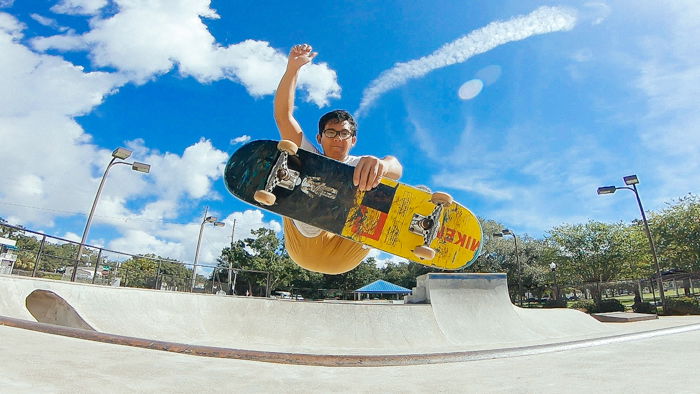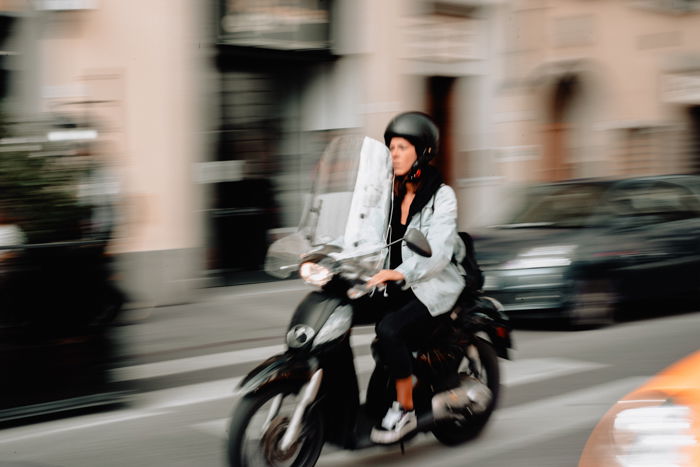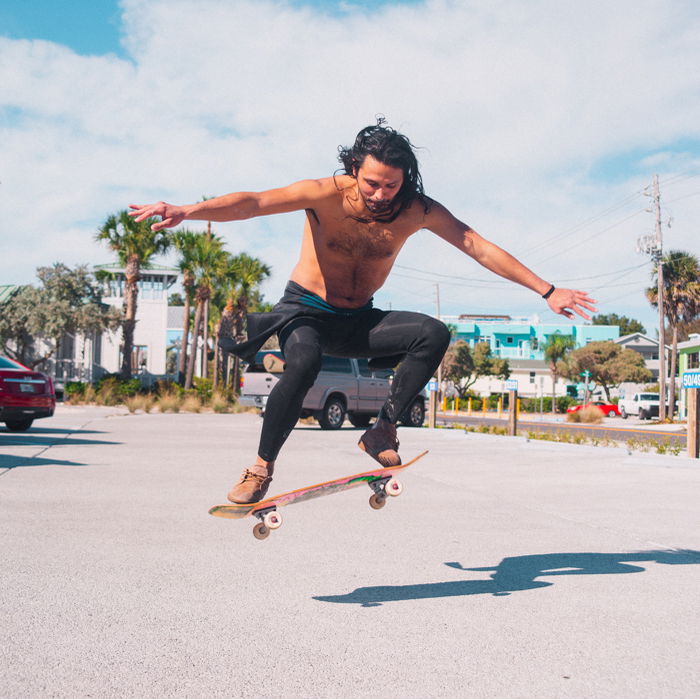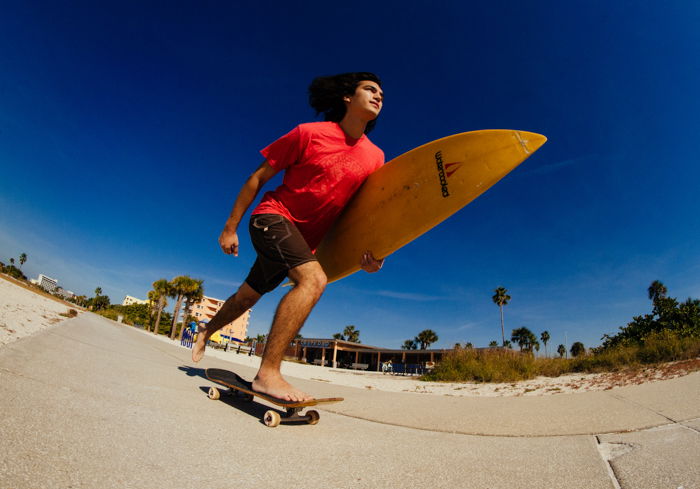How to Capture Fast-Moving Objects with a Phone (Action Shots)
Capturing fast-moving objects with a phone can be tricky, but it’s not impossible. By following a few simple tips, you can capture fast-moving objects with a phone.
First, make sure you have a good grip on the phone. Hold it firmly in both hands, with your fingers curled around the edges. This will help keep it from shaking and blurring the image.
Second, use either the zoom or the manual focus feature to get as close to the object as possible. The closer you are, the less chance there is of blurriness.
Finally, brace yourself against something solid to minimize any movement caused by your own body. Take a deep breath and hold it until after you take the picture. Then release and exhale slowly.
[highlight type=”short” price=”no” tag=”epshorthighlight-20″ toc=”no” title=”Manfrotto PIXI Mini Tripod” badge=”Stability And Versatility” product=”35232″]Learn how to capture fast-moving objects with a phone using our versatile smartphone tripod. With double functionality, it works as a stable holder or ergonomic grip to capture steady action shots.[/highlight]
Anticipate and Capture Fast-Moving Objects With A Phone
One of the most crucial aspects of action photography is knowing where your subject is going. That way, you can prepare to take the photo in advance.
When shooting races, for instance, anticipating action is easy. It often goes from left to right of the frame or vice versa. So all you have to do is pan your phone in the same direction as your main point of interest.
But how about capturing more erratic moves such as dancing? The secret is to be familiar with the movements of your subject. It all might seem random at first, but you’ll realize that some manoeuvres are repetitive. So watch out for those bursts of energy because you’ll likely see them again. As long as you pay attention, you’ll get your shot without a lot of issues.
Remember that just like anything, anticipating action requires some practice. So go out there and take photos of anything that moves from your pets to cars until you feel more comfortable.
Pay Attention to Your Composition
The composition is always a priority even when you’re taking photos of moving objects. If you don’t pay attention to where your subject is, you may end up with a bad crop even when you capture the movement.
Always look at your screen even as you follow your subject. Make sure they remain inside the screen, and you don’t cut off their heads and their arms.
Feel free to turn on your grid as well. Doing so allows you to check your composition as you’re capturing your subject. Place your point of interest anywhere the lines intersect, and you should have a well-balanced image.
Of course, checking your composition while taking pictures isn’t always going to be as easy. Consider practising at home before you go out and face more challenging scenarios. And remember to breathe. The less tense you are, the better you’ll handle your camera and keep your frame on your subject.
Shoot in Burst Mode
There’s no denying that timing is essential in sports photography. It can be difficult even for professionals to get their timing right sometimes. The good news is that cameras, even the one on your phone, now can shoot in Burst Mode.
Burst Mode lets you take photos continuously as long as your finger is on the shutter. That way, you don’t have to worry about your timing and missing the perfect action shot.
For most phones, all you have to do is press and hold the shutter button. The camera will automatically take burst photos.
For the iPhone, you can activate Live Mode. Apart from letting you take a series of pictures, it also animates the entire sequence for you.
Burst Mode works well in most situations except when there isn’t enough light available. When it’s too dim, your images may end up blurry. So do your best to shoot in well-lit conditions only.

Exaggerate the Action Shot With Panning
Now that you can control your shutter speed with a third-party app, then you should try panning. This technique allows you to add motion blur in the background while keeping your subject relatively sharp.
To successfully do a panning shot, all you have to do is follow your subject from left to right or vice versa while using slow shutter speed. In most cases, 1/30th or 1/15th of a second is enough to blur the background.
But of course, the shutter speed you choose all depends on the amount of light you have in the scene. The more light there is, the higher you should bump up your settings to maintain a well-exposed image.
You can handhold your camera while taking a panning shot. However, it would be best to use a tripod to ensure that you don’t introduce camera shake when holding your device. That way, you can ensure your subject stays sharp in the picture.

Shoot Your Subject While in the Air
Make your images look more dramatic by freezing motion in the air. For instance, if you have a skateboarder as a subject, press the shutter once they leave the ground.
But what if you’re taking pictures of people who are not jumping around a lot? Then wait for the moment when at least one of their arms or legs is in the air. So when people look at your photo, they’ll know right away that your subject is moving.
If you’re using Burst Mode, take several pictures and choose the photo you like the most in the sequence. Pick the one that has the most dynamic movements. Your audience will gravitate towards that one image.

Try Various Angles
Action shots don’t have to be at eye-level all the time. Feel free to experiment with different perspectives to add drama to your pictures.
For instance, you can try low angle shots that would make people look bigger and more heroic. Get on the ground, point your camera upwards and start shooting!
Although less common in sports photography, you also have the option to shoot from above. This angle allows you to show more of the environment as well as the action. Look for a location with a higher vantage point such as a roof, a tree, or even a ladder to get the perfect action shot.
Another angle you can try is the Dutch tilt. This unusual angle creates tension as well as make otherwise boring photos look edgy. Although it sounds technical, all you have to do is tilt your camera diagonally and press the shutter.

Use an App for Slow Shutter Speeds
Apart from shooting burst photos, there are tons of other ways to photograph the action. You can try different shutter speeds and end up with all sorts of effects.
In technical terms, shutter speed is the amount of time your shutter stays open when taking a photo. A fast shutter speed lets you freeze the motion, while a slow shutter speed enables you to blur your subject.
Unfortunately, the native camera apps on most phones currently don’t have Manual settings. So if you plan to change your shutter speed yourself, you’ll need to download an app that will let you do that.
One of the best apps out there that you can use is Camera +2. Although it features full manual controls, it’s not intimidating for beginners to use.
If you want to try slow shutter when capturing motion, tap the plus icon beside the shutter button. Scroll through the options and choose Slow Shutter (aperture icon). Next, change the Brightness and the shutter speed by swiping their dials left or right. Adjust accordingly until the exposure on your screen looks decent.
In most cases, you’ll need at least 2 seconds for a good motion blur. But you may use an even slower shutter speed if you want long streaks to show in your image.
Consider mounting your phone on a tripod, such as this Manfrotto one, when using slow shutter speed. That way, you don’t introduce unnecessary motion blur when you’re holding your device with your hands.

Use a Fisheye Lens to Capture the Whole Scene
In most situations, your regular phone lens is all you need to capture the action. But if you’re photographing your subject up close, there’s a chance you may not fit everything inside the frame.
If you don’t want to cut your subject’s limbs in your pictures, consider trying a fisheye lens.
You can buy these attachments, such as the Moment fisheye lens, online or at a phone accessories store. You can easily clip them on the front of your lens to give you a wider angle of view. That way, you can make sure everything is in the frame even when you’re only a few inches from your subject.
Most new phones, such as the iPhone 11, now also have built-in super-wide-angle lenses. You can use that instead if you don’t want to clip an attachment onto your device.
Just remember that fisheye lenses can distort your photos. Some people like how it looks, while others think it’s not as great. So consider this little caveat before getting yourself one.

Conclusion
Taking action shots shouldn’t overwhelm you. Apply our tips and tricks to increase your chances of capturing awesome pictures!
Remember that it’s okay if you don’t get it the first time. All it takes is some practice. It won’t take that long to realize that it’s quite easy to do.
Get out there, have fun, and don’t be afraid to make mistakes! Once you capture a great photo, you’ll want to take more.
